It was a surprising sight in a land grown accustomed to surprises: the king at the wheel of a Mercedes-Benz, driving himself and his queen through the crowded streets of Kathmandu.
“He was in the front seat! In traffic!” said Krishna Chetri, a 56-year-old shop owner.
“Where’s the majesty?” he asked. “This is something I never would have believed.”
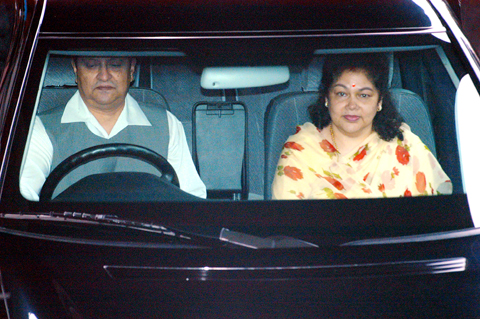
PHOTO: AP
In this Himalayan land, the Shah dynasty of kings reputed to be reincarnated Hindu gods is being pushed to possible extinction by the fallout from a decade-long communist rebellion and King Gyanendra’s own autocratic ways.
Nepal votes on Thursday for an assembly that will rewrite its Constitution, the latest effort to transform a troubled, near-medieval land into a modern democracy. And the assembly’s first order of business: eliminating the monarchy.
“This king has done too much harm. He’s shown us that we don’t need kings,” said Krishna Prashad Sitaula, a Cabinet minister and a leader of the centrist Nepali Congress party who helped negotiate the peace deal with the rebels, known as the Maoists.
Not everyone is so sure.
“This king lost the people’s favor,” said Ram Shresthra Prasad, a 42-year-old priest at the Pashupatinath Temple, the clamorous shrine to which Gyanendra drove last month.
But “this talk of a secular republic is ignorant,” he said.
“Our kings created Nepal. They protect our Hindu religion. The kings are the symbol of Nepal.”
Yet in many demonstrative ways, Gyanendra’s 269-year-old Shah dynasty has reached the end of the line.
In January, Nepal’s interim parliament formally declared the country a secular republic. Gyanendra’s portrait has disappeared from shop walls and the currency “Royal” has been removed from the name of the army and national airline. References to the king are gone from the national anthem.
Gyanendra has also endured other indignities. His US$3.1 million annual allowance and 10 of the family’s palaces were taken away, as were the queen’s beauticians and about half his ceremonial guard.
Gyanendra can probably afford the losses. Before assuming the throne, he was known as a hardheaded businessman with interests in tourism, tea and tobacco.
He can also afford to hire his own driver and did his own driving to show that he is at the public’s disposal in what ever role it chooses, said a palace official, who spoke anonymously because the government has told Gyanendra not to make public statements.
Gyanendra’s aides and supporters are hoping that the fractious political elite will be unable to agree on dumping him and will also head public opinion, which seems far from unanimous about abolishing the monarchy.
A survey conducted in January by Interdisciplinary Analysts, a private firm, found 49 percent of Nepalis favored retaining the monarchy and 12 percent undecided.
But Gyanendra, personally, fared far worse. The 3,000 people questioned gave him an average popularity rating of 2.8 on a scale of 1 to 8, the lowest of any major political figure. The poll gave a margin of error of 2 percentage points.
Gyanendra’s dynasty dates back to 1769, when a regional ruler conquered Kathmandu and united Nepal.
The mystique of the royal line he founded was pierced in 2001 by a palace bloodbath in which a gunman, allegedly the crown prince, gunned down late King Birendra and much of the royal family before killing himself. Gyanendra, the dead king’s older brother, then took the throne.
Four years later, with armed rebellion raging, Gyanendra dismissed an elected government and vowed to crush the Maoist rebellion himself. He failed, and his popularity plummeted. By April 2006, widespread unrest had forced the king to restore democracy.
Soon after, the Maoists ended their fight. And last year, in a deal that paved the way for Thursday’s elections, they agreed with the major political parties that after the vote no man should wear the bejeweled Nepalese crown of yak hair and peacock feathers.
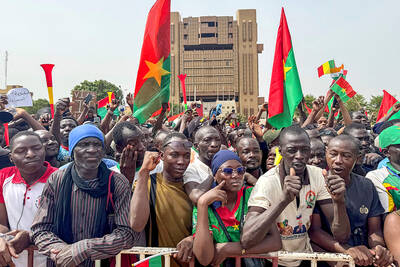
Kehinde Sanni spends his days smoothing out dents and repainting scratched bumpers in a modest autobody shop in Lagos. He has never left Nigeria, yet he speaks glowingly of Burkina Faso military leader Ibrahim Traore. “Nigeria needs someone like Ibrahim Traore of Burkina Faso. He is doing well for his country,” Sanni said. His admiration is shaped by a steady stream of viral videos, memes and social media posts — many misleading or outright false — portraying Traore as a fearless reformer who defied Western powers and reclaimed his country’s dignity. The Burkinabe strongman swept into power following a coup in September 2022
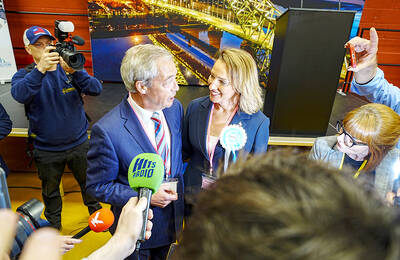
‘FRAGMENTING’: British politics have for a long time been dominated by the Labor Party and the Tories, but polls suggest that Reform now poses a significant challenge Hard-right upstarts Reform UK snatched a parliamentary seat from British Prime Minister Keir Starmer’s Labor Party yesterday in local elections that dealt a blow to the UK’s two establishment parties. Reform, led by anti-immigrant firebrand Nigel Farage, won the by-election in Runcorn and Helsby in northwest England by just six votes, as it picked up gains in other localities, including one mayoralty. The group’s strong showing continues momentum it built up at last year’s general election and appears to confirm a trend that the UK is entering an era of multi-party politics. “For the movement, for the party it’s a very, very big
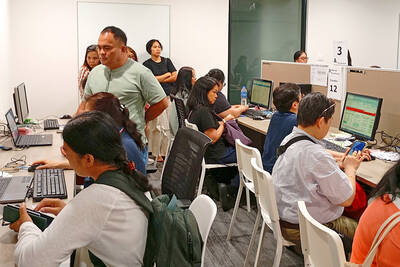
A new online voting system aimed at boosting turnout among the Philippines’ millions of overseas workers ahead of Monday’s mid-term elections has been marked by confusion and fears of disenfranchisement. Thousands of overseas Filipino workers have already cast their ballots in the race dominated by a bitter feud between President Ferdinand Marcos Jr and his impeached vice president, Sara Duterte. While official turnout figures are not yet publicly available, data from the Philippine Commission on Elections (COMELEC) showed that at least 134,000 of the 1.22 million registered overseas voters have signed up for the new online system, which opened on April 13. However,
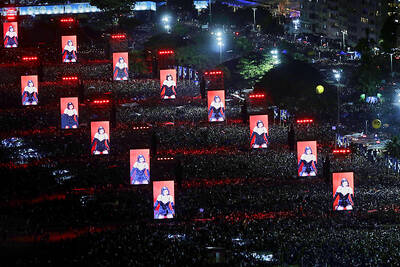
ENTERTAINMENT: Rio officials have a history of organizing massive concerts on Copacabana Beach, with Madonna’s show drawing about 1.6 million fans last year Lady Gaga on Saturday night gave a free concert in front of 2 million fans who poured onto Copacabana Beach in Rio de Janeiro for the biggest show of her career. “Tonight, we’re making history... Thank you for making history with me,” Lady Gaga told a screaming crowd. The Mother Monster, as she is known, started the show at about 10:10pm local time with her 2011 song Bloody Mary. Cries of joy rose from the tightly packed fans who sang and danced shoulder-to-shoulder on the vast stretch of sand. Concert organizers said 2.1 million people attended the show. Lady Gaga